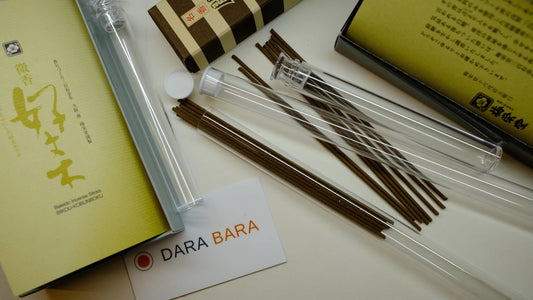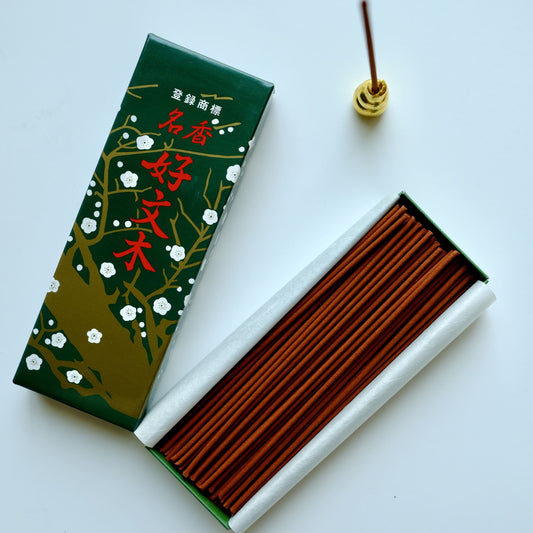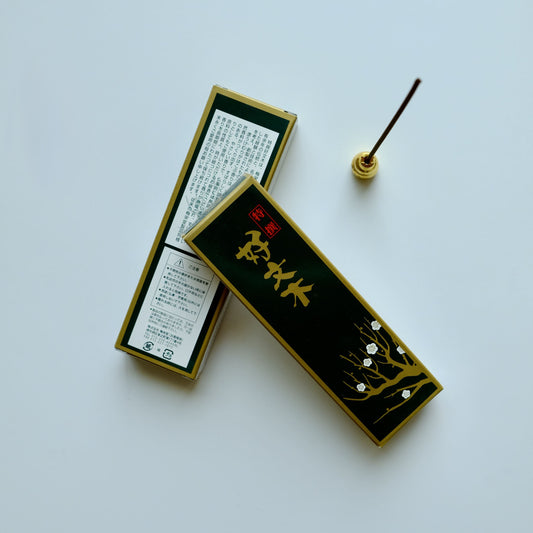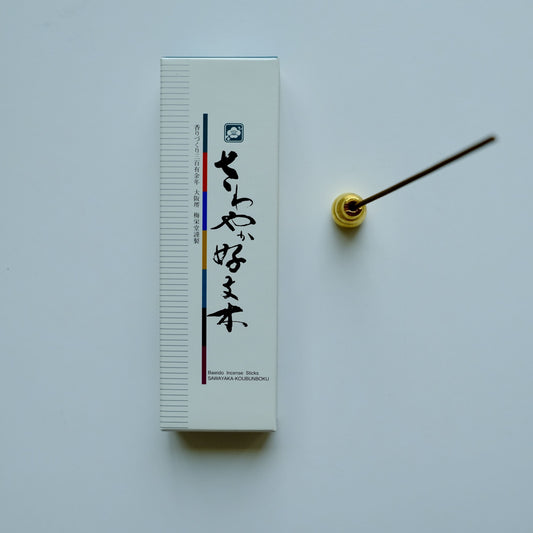Your First Steps into a Deeper World: A Beginner's Guide to Japanese Incense
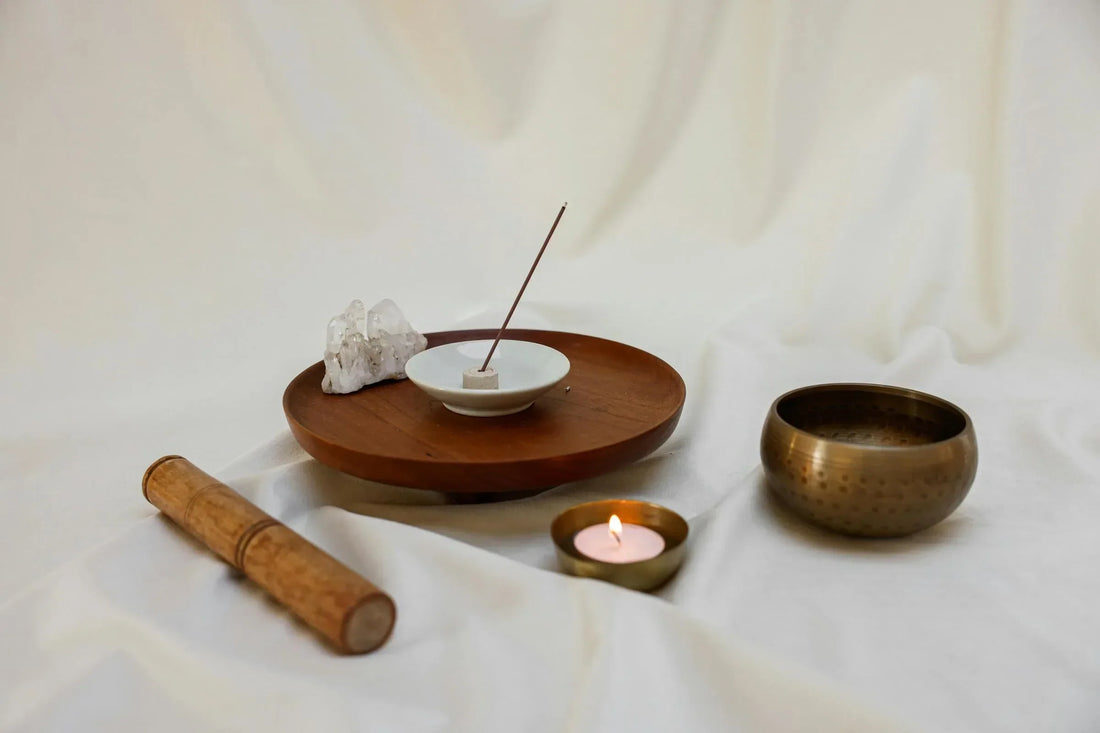
I’ll be the first to admit it: I used to be a bit hubristic about incense. Growing up in an Asian culture where incense is a familiar backdrop to daily life, I mistakenly assumed its nuances were universally understood. I couldn’t have been more wrong. I’ve since learned that the quiet, refined world of Japanese kō is a new and fascinating landscape for many. It was this realization that inspired us to write this guide—to bridge that gap and properly introduce the beautiful art of Japanese incense to those who are curious to learn more.
Where to Start? With the Stick.
Japanese incense, or kō (香), is a tradition dating to the 6th century, first used by monks to purify sacred spaces. For a beginner, the best entry point is stick incense, or senkō (線香). The key difference is that Japanese sticks are typically coreless—no bamboo stick in the middle. This results in a cleaner burn, less smoke, and a far more subtle fragrance.
Learning to "Listen" to Incense
In Japan, the formal art of incense appreciation is known as Kōdō (香道), the "Way of Incense." Central to this art is the concept of monkō (聞香), or "listening to the incense," rather than just smelling it. This practice encourages a mindful focus on the fragrance and the feelings it evokes.
To fully appreciate the experience, light your incense in a calm, quiet environment. Let it be a companion for meditation, relaxation, or simply to create a welcoming atmosphere in your home.
A More Honest Look at "Natural Ingredients"

While the term "natural" is used loosely in the fragrance world, the composition of traditional Japanese incense is what sets it apart. Many modern incense sticks are simply bamboo dipped in synthetic fragrances or low-grade oils. High-quality Japanese incense is fundamentally different.
Its foundation is a paste made from finely milled aromatic woods, like sandalwood and prized aloeswood, blended with genuine spices and resins. This mixture is bound together with Tabu-no-ki (タブ粉), the powdered bark of the Machilus thunbergii tree, a natural adhesive that also allows the stick to burn evenly.
While some contemporary Japanese makers do use high-quality essential oils to achieve specific scent profiles, the soul of the fragrance almost always comes from the precious woods themselves. This is why you can "listen" to its true character, a stark contrast to the artificial loudness of perfume-dipped alternatives.
The Practical Truth About Low-Smoke Incense

You will often see "low smoke" marketed as a key feature, and for those in smaller spaces or sensitive to smoke, it’s a brilliant innovation. However, it’s important to understand a practical trade-off. By its very nature, a low-smoke blend can be more delicate and sensitive to burning conditions.
Specifically, low-smoke incense sticks have a higher tendency to extinguish themselves when laid flat on a bed of ash. This isn't a flaw, but a characteristic. The reduced contact with air can be enough to stop the ember.
The solution is simple: Ensure it has adequate airflow. Either use a stand-type holder that keeps the stick upright, or if you're using an ash-filled tray, create a small ridge of ash at either end to prop the stick up, allowing air to circulate underneath.
What Brands to Consider at Darabara
Here at Darabara, we are proud to carry some of Japan's most respected and historic incense makers. Starting with these brands ensures your first experience is an authentic and beautiful one.
- Shoyeido (松栄堂): With over 300 years of history, Shoyeido is a beloved incense maker renowned for their natural, expertly blended fragrances. Their Horin (芳輪) series offers a modern take on classic scents, with Shirakawa (White River) being a perfect starting point with its soothing, sweet sandalwood blend.
- Nippon Kodo (日本香堂): As Japan's largest incense maker, Nippon Kodo has a vast selection perfect for newcomers. Their Ka-Fuh (花風) line is specifically designed for low smoke and pure scents. We recommend trying Hinoki (Japanese Cypress) for a clean, woody, and refreshing aroma that can instantly transport you to a Japanese forest.
- Baieido (梅栄堂): For a taste of classic, traditional incense, Baieido is an exceptional choice. They have been crafting incense since 1657. Their signature Kobunboku (好文木) is a historic blend of sandalwood, borneol, clove, and other spices—a timeless fragrance that serves as a perfect introduction to the deeper, spicier side of the incense world.
- Kousaido (香彩堂): Based in Kyoto, Kousaido blends traditional techniques with modern sensibilities. Their TENNEN (天然) or "Natural" series is fantastic for beginners who want to experience pure, single-note fragrances like Japanese Cypress or Aomori Hiba, perfect for creating a serene and natural atmosphere.

